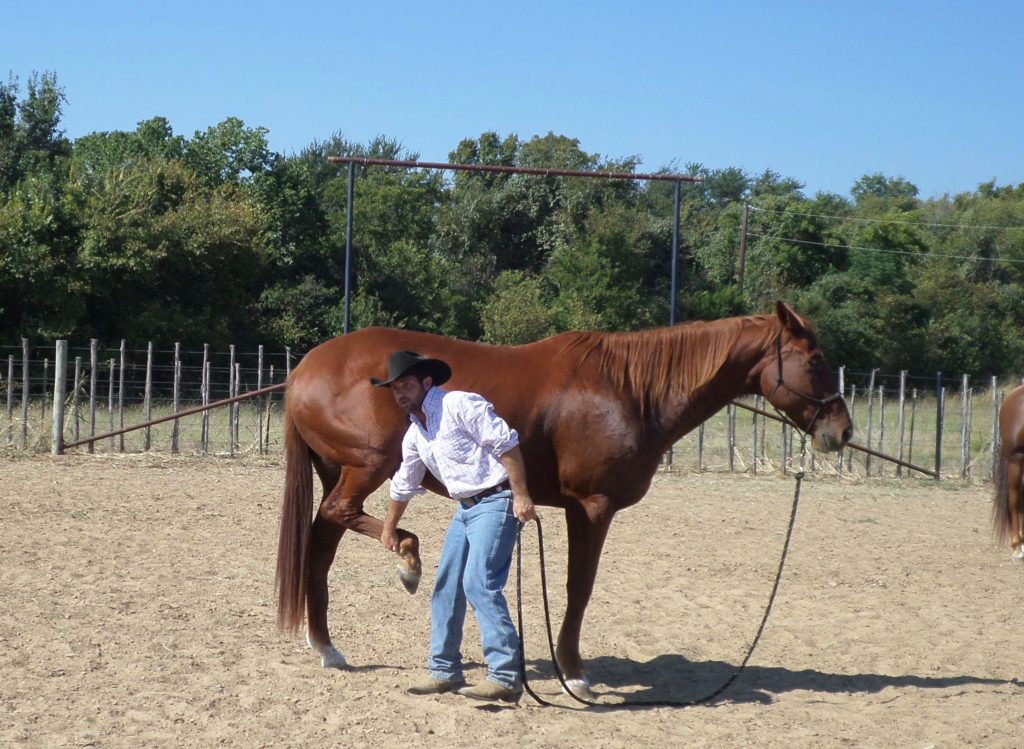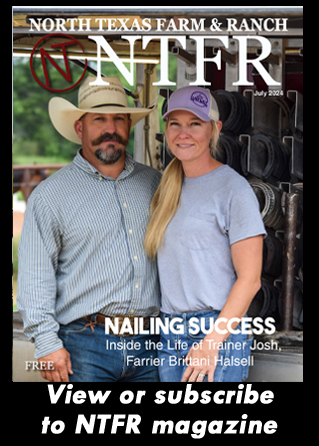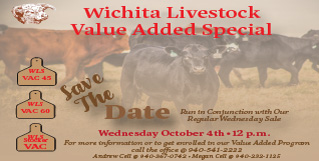HOME
The Natural Horseman – Horses that have trouble being trimmed
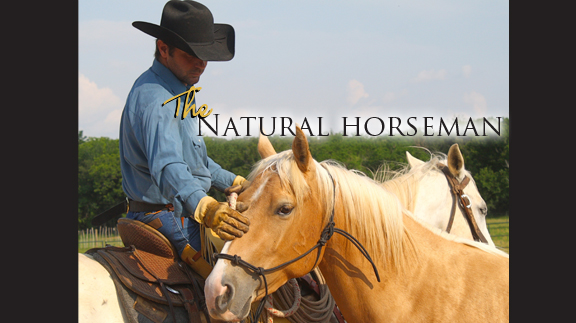
By Steve Stevens
So often we get horses in training or have someone ask us what to do about their horses that throw fits with their farrier. The horses won’t stand still, pull back, won’t pick up their feet or even can strike and kick. Their farrier is always upset, doesn’t want to work on their horse or even worse, because the horse is giving them a rough time, the farrier takes his frustration out on the horse.
There are a few factors here that need to be dealt with.
The first is for the owner to understand that for a lot of horses, having their feet worked on can be very stressful and overwhelming. Most farriers don’t have the time and/or patience to go slow and help train your horse. The only way they can make a living is to hurry up and move on as soon as possible to get to the next horse. So it now becomes OUR responsibility to prepare our horse. If your horse won’t stand still for you to pick up all four feet, and clean their hooves out with a hoof pick, they probably aren’t ready for the farrier who will be in a rush, will have multiple clanging tools and will be asking your horse to get into fixed positions.
We must be consistent with picking up our horse’s feet and letting them get comfortable with that. If your horse is giving you a rough time or you are scared to pick up their feet, you must find a professional to help.
With all the problem horses I have worked with, one of the most important philosophies we have learned and practiced is a very simple concept:
IF YOUR HORSE WON’T STAND STILL FOR YOU TO PICK UP HIS FEET, GROOM HIM OR SADDLE HIM NOT BEING TIED, THEN HE IS NOT READY TO BE TIED UP.
See, when a horse is tied hard, we take away their ability to move their feet.
So if they get scared, they are trapped and most often will fight, pull back, fall down, kick and get worse at the task at hand. How many times have you tied up your horse hard and he got scared and fought it, got through it for the time being, but then when you come back another day he has the same issues?
We need to understand how horses process their thoughts. A horse feels safer when he has the ability to move his feet. It’s easier for him to work through things. Once we take that ability away, he will most always fight if he gets scared or bothered. So before we ever tie him up, we must learn how to do these tasks with him untied.
I know this goes against all the old school techniques. But trust me…we get the horses in training after the old school techniques don’t work…after horses have pulled back, broke multiple halters, split their heads open, nearly killed the farrier and/or yourself.
The second factor is that owners need to have the courage to stand up to their farrier if they see things are getting out of control. If a horse is getting more scared, and the farrier is getting more upset, it is ok to say, “That can be enough for today, let me work with him a little bit more before he or she gets anyone hurt.” So what if your horse’s feet get a little long and you have to pay a bill? It is better than the alternative of being scared to death every time he gets trimmed.
If you have a farrier worth his salt, he will be appreciative that you don’t want him to get killed today trimming your horse. If he tells you otherwise, it’s probably time to find another farrier. I can’t tell you how many times clients have brought me horses that have foot issues, can’t be tied or go running to the other side of the pen when the farrier comes. The client often tells me something like, “I knew it was getting worse every time my horse got trimmed, but I just felt bad to stop using my farrier. He is a really nice guy.” We must find the strength to do what is right for the horse and if you have to go through five farriers to do so, that is fine.
I probably sound like I am bashing farriers right now, but actually I have more respect for a farrier’s profession than anyone. It is not easy to have to get under crazy horses all day long in the elements. I have been blessed to know a handful of amazing farriers who are always on time, patient, knowledgeable and understanding. They know that if they are going to work on your horse for the next twenty years, that if they take their time the first couple of times, it should be easy for the next two decades.
The third factor is to do the training with a horse that is having a hard time. If a horse nips, or kicks, leans or won’t stand still, we must try our best to correct the issue.
The easiest way to do this is to move their feet, to make them work, hustle them by lunging, doing rollbacks, driving their hindquarters around.
I will give you an example. If I were holding a horse for the farrier and she kicked or tried to bite him, I immediately would start lunging that horse, making it work. That is how we can make the wrong thing difficult. So make sure your horse can lunge well, change directions and back up well on a lunge line.
THE NEXT TIME YOUR HORSE GIVES YOU OR THE FARRIER A TOUGH TIME, PUT IT TO WORK.
The more aggressive the behavior, the longer I will hustle them. The toughest part about this exercise is having the wind to really put some effort behind this and hang in there long enough that they get the point. Once you are done, bring them back to where you started and go back to work like nothing ever happened. This may take two to three times to really take effect, depending on your ability and expertise.
Just remember, if things are going bad when getting your horse’s feet done, it will only get worse if you don’t work on fixing the problem.
Have faith that there are amazing farriers out there and take the time to find them.
HOME
Joe N. “Buzz” Thorp to Receive Ranching Heritage Association Working Cowboy Award
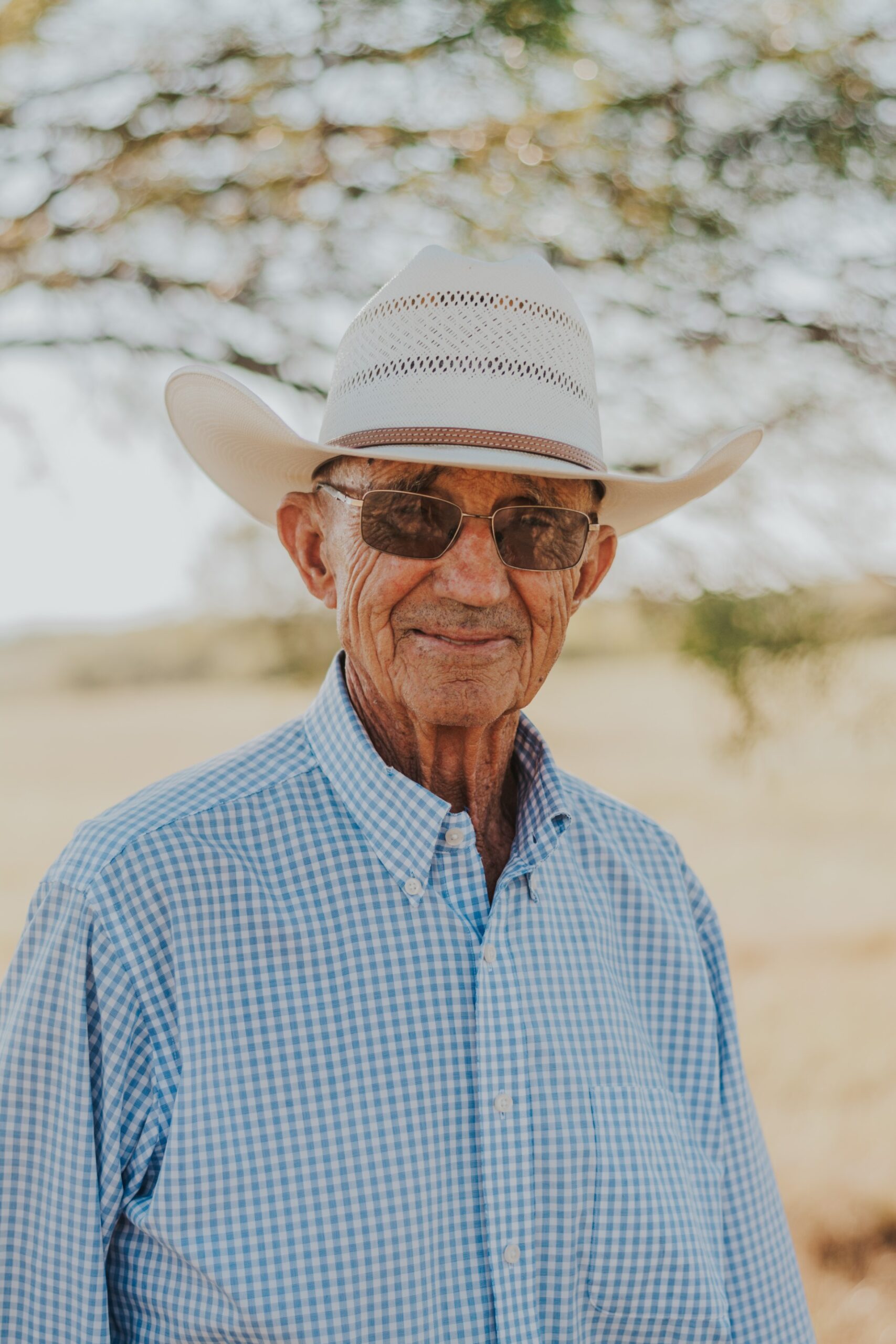
Joe N. “Buzz” Thorp, a cowboy who has worked on ranches from Tennessee to Montana and New Mexico to Texas, will be the sixth recipient of the Ranching Heritage Association (RHA) Working Cowboy Award presented during the annual National Golden Spur Award Honors on Saturday, October 5, at the Lubbock Memorial Civic Center in Lubbock, Texas.
“The RHA Working Cowboy Award is designed to recognize an outstanding individual who makes his living primarily horseback, caring for livestock on a daily basis,” said Jim Bret Campbell, executive director of the Ranching Heritage Association and the National Ranching Heritage Center. “Buzz Thorp represents all of the facets of the working cowboy award. He is a cowboy’s cowboy, a teacher and a true representative of our cow-country values.”
The Ranching Heritage Association, a nationwide non-profit membership organization supporting historical preservation and educational efforts through the National Ranching Heritage Center, presents the prestigious recognition on an annual basis. The award honors a working cowboy skilled in all aspects of ranch work and respected by the ranch crew and ranching community.
“Our Board of Directors believes it’s important to recognize those folks who brave all kinds of weather and conditions to ensure that work on a ranch gets done,” Campbell said, noting that award nominations for Thorp described him as a multi-talented working cowboy who has served for decades as a role model for younger cowboys in trade and character.
“More than a cowboy, Buzz is a cowman and a steward,” stated Rob A. Brown, who grew up working with Buzz on the R.A. Brown Ranch. “He is a horseman and a conservationist with expertise in so many areas that this letter could be filled merely listing them out. In my view, at the most fundamental sense, Buzz is a teacher.”
Thorp worked for his father, B.F. Thorp, in Throckmorton County in Texas while growing up. He also cowboyed for his uncles and cousins during that time. He worked for the Muleshoe Cattle Company while attending Texas Tech University, where he graduated with a degree in animal husbandry in 1954.
At age 21, Thorp managed Ridglea Angus Farms in Dickson, Tennessee, before returning to Throckmorton where he worked for the R.A. Brown, McClusky and Birdwell ranches. He also ran his own cows and trained horses. In 1974, Thorp became the cow boss at Spanish Creek Ranch in Gallatin Gateway, Montana. From there, he moved to manage yearlings on Jones Ranch at Wagon Mound, New Mexico. Thorp managed the McKee Ranch in Galisteo, New Mexico, before returning to Texas to manage ranches in Palo Pinto, Throckmorton and Baylor counties, including the Wagon Creek Spade Ranch outfit. Thorp managed that division of the Spade Ranches for 10 out of the 12 years he worked there.
Recognized as an outstanding stockman, horseman and teacher, at age 91, Thorp continues to be in demand to day-work on neighboring ranches, including the R.A. Brown Ranch. A notable horse trainer, Thorp has trained horses that have gone on to successful careers on ranches and in the arena, including for his grandson, Wesley Thorp, who is a two-time Professional Rodeo Cowboys Association heeling world champion.
“As his grandson, childhood stories were often told about his days working cattle and training horses,” Wesley said. “He’s [had an influence] on many great ranches such as Haythorn, Swenson and Browns. He is an all-around hand and one great cowboy. The impact he has had on my team roping career is one that will last forever.”
“In addition to his technical skills, Buzz is also an outstanding leader and mentor,” said Kelli Brown of the R.A. Brown Ranch. “He is always willing to share his knowledge and expertise with others, whether they are seasoned ranch hands or newcomers to the industry. His patience and dedication make him an asset to any neighbors and friends. I am thankful that he has mentored numerous generations of our Brown family, including my husband and sons.”
Thorp’s lifetime of cowboying accomplishments will be honored at the National Golden Spur Award Honors on October 5. Sponsorship packages for the National Golden Spur Award Honors, including table sponsorships, are currently available. Individual tickets for the National Golden Spur Award Honors will go on sale to the public August 8. For event details visit goldenspurhonors.com.
HOME
Farm and Ranch Injuries
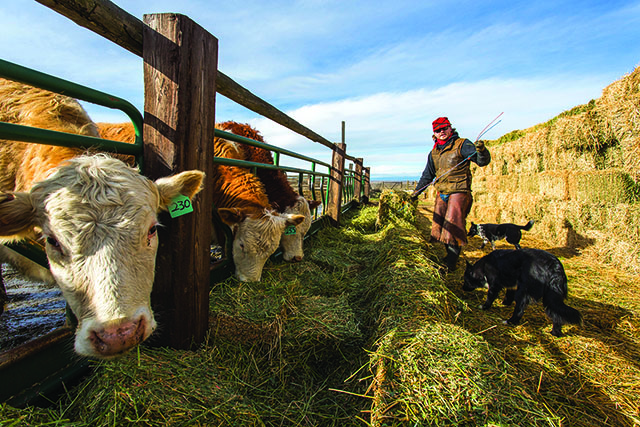
By Barry Whitworth, DVM
In January, I attended the Oklahoma Veterinary Conference. While waiting for one of the sessions to start, a classmate of mine commented how many of the attendees walk with a limp, used a cane, and/or have damaged hands. We all agreed that working with animals is hard on the body. In general, anything associated with farming and ranching is dangerous.
Most farmers and ranchers know that agriculture is a dangerous occupation. According to United States Bureau of Statistics, workers involved in agriculture, forestry, and fishing had the highest occupational fatality rate in 2022. The fatality rate of 23.5 per 100,000 full-time equivalent (FTE) workers for this group is much higher when compared to the overall occupation fatality rate of 3.7 per 100,000 FTE. Most of the agriculture-related fatalities are associated with transportation, such as tractor overturns, and vehicle crashes, but a fair number involve livestock.
To read more, pick up a copy of the March issue of NTFR magazine. To subscribe by mail, call 940-872-5922.
HOME
Jesses Jewelz

By Jesse Kader
Comfy and keep it western. That’s the name of the game this month. It’s hot and who wants clingy clothing? This jumpsuit is perfectly comfortable and relaxed without forfeiting the fashion. Dress it up or keep it casual. See this and more at www.jessesjewelz.com.
-

 Country Lifestyles1 year ago
Country Lifestyles1 year agoScott & Stacey Schumacher: A Growth Mindset
-

 Country Lifestyles7 years ago
Country Lifestyles7 years agoStyle Your Profile – What your style cowboy hat says about you and new trends in 2017
-

 Equine10 months ago
Equine10 months agoThe Will to Win
-

 HOME7 years ago
HOME7 years agoGrazing North Texas – Wilman Lovegrass
-

 Country Lifestyles4 years ago
Country Lifestyles4 years agoAmber Crawford, Breakaway Roper
-

 Outdoor9 years ago
Outdoor9 years agoButtercup or Primrose?
-

 Country Lifestyles8 years ago
Country Lifestyles8 years agoDecember 2016 Profile, Rusty Riddle – The Riddle Way
-

 Country Lifestyles8 years ago
Country Lifestyles8 years agoJune 2016 Profile – The man behind the mic: Bob Tallman

